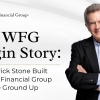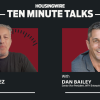

As we ring in a New Year, the “Housing News Report” asked five prominent economists to forecast what 2015 will bring for the U.S. housing market after a 2014 that was a bit of a reality check in the housing recovery following two strong bounce-back years in 2012 and 2013.
Overall, the economists we interviewed were cautiously optimistic about 2015 when it comes to home prices, home sales, interest rates and the impact of loosening lending standards that have recently been introduced by government agencies. All of them see a return of more traditional, owner-occupant buyers for the year, but not all agree which demographic those buyers will come from — millennials or older generations who either delayed a home purchase because of the housing bubble or are boomerang buyers coming back from a failed attempt at homeownership during the housing bubble.
Here’s what they are forecasting for 2015:
Quick takes:
Lawrence Yun, chief economist and senior vice president of research at the National Association of Realtors: More buyers returning to market from improved job market conditions and a steady flow of buyers who went into the “penalty box” after a distressed property sale.
Jonathan Smoke, chief economist at Realtor.com: The new 3 percent down payment products coming from Fannie Mae and Freddie Mac should have a positive impact on the market as they enable more first-time buyers who have good credit, but limited assets.
Christopher Thornberg, principal at Beacon Economics: We expect sales and price appreciation to pick up steam this year. Existing home sales should rise over 5 million and prices will accelerate some — probably close to double digits by the end of next year.
Mark Zandi, chief economist at Moody’s Analytics: New and existing home sales are expected to increase by as much as 20 percent in 2015. Key to this optimism is continued gains in the job market. The market should be tight enough that households will finally enjoy real wage gains.
Jed Kolko, chief economist at Trulia: The strongest source of housing demand will be young people getting jobs and forming households. But they’ll be moving into rentals and saving for a down payment rather than buying homes right away.
In hindsight, how did 2014 match up with your forecast for the year?
Kolko: The housing market in 2014 turned out as we expected in many ways. Housing affordability has declined, thanks to home prices continuing to rise faster than incomes. Markets that were hurt badly in the bust and then rebounded in 2012 and 2013 saw sharp price slowdowns in 2014, while other markets have seen steadily rising prices. First-time buyers did not lift the market, and investor activity declined — which is what we meant by calling 2014 “the year of the repeat home buyer.” And the apartment market has been on fire. Our predictions for 2014 are here.
What, if anything, surprised you about the direction the economy and economic policy headed during the year?
Thornberg: We had been bullish on 2014 in general and had forecasted a 3 percent growth year. Needless to say the first quarter with its negative growth rate surprised us. But the forces that created this contraction were transitory, and the economy has roared back since. We think — that all said and done — the economy will end up very close to our original prediction.
However, this is not true for the rest of the world. It’s impossible to foresee the issues out there, but the ongoing issues in Europe and the collapse in commodity prices at the end of the year took us by surprise. There are good and bad points to these trends. Exports will be less of a source for potential growth, but at the same time American’s are enjoying low gas prices and interest rates. In the end, we don’t think the external situation will push the U.S. off its current growth path.
What will be the most important housing market trend(s) in 2015 and why?
Smoke: Realtor.com anticipates the most important trend in 2015 will be a substantial change in what has been missing in the housing market recovery thus far: the first-time homebuyer. In 2015, we should see first-time buyer market share return to more normal levels due to increased demand from millennials resulting from demographic and economic factors. On the demographic side, the largest generation ever is reaching a critical tipping point in the number of 25- to 34-year-olds, the historically key age range for buying a first home. On the economic side, job growth continues to favor the young, so opportunities are improving for this buyer segment just as life events are driving more interest in home ownership.
Homebuilding should finally see more growth in 2015 with at least 20 percent growth in single-family starts. Builders focusing on more affordable entry-level product will enable some growth. However, lot, labor and building material constraints will limit how much builders can deliver. The first-time market is critical to seeing more recovery in the volume of new construction.
As the dust settles on 2015, we should also be able to write the final chapter on the aftermath of the financial and housing crisis with its abnormal levels of distressed property activity and investor purchases.
What is your outlook for 2015 in terms of home prices — both existing and new?
Zandi: House price growth in 2015 should be in the low single digits, for both existing and new homes. Prices are recovered in most parts of the country, and are consistent with household incomes and rents. Homebuilders also need to worry about affordability given the big increases in new house prices in recent years.
What is your outlook for 2015 in terms of home sales — both existing and new?
Zandi: New and existing home sales are expected to increase by as much as 20 percent in 2015. Key to this optimism is continued gains in the job market. The market should be tight enough that households will finally enjoy real wage gains. The wage gains will buoy housing affordability in confidence, both essential ingredients for stronger housing demand.
Where are interest rates headed in 2015?
Smoke: Mortgage rates will go up in 2015 — the key questions are: When and by how much? We expect the average 30-year fixed rate to reach 5 percent by the end of the year. While the Fed may not act on increases until the second half of the year, the bond and mortgage markets are likely to move well in advance. We are also likely to see quite a bit of rate volatility in 2015 until the Fed’s actions are evident and the global economic picture becomes clearer.
We are already seeing average rates increase slightly since the Fed’s formal statement on Dec. 17, where they dropped “considerable time” language from their statements. Keep an eye out for more anticipatory movement as the year progresses.
How will recent efforts to loosen lending standards impact the housing market in 2015?
Kolko: Modestly. The main obstacle to buying a home is saving for a down payment, according to Trulia’s consumer survey, more than qualifying for a mortgage. Furthermore, many future first-time buyers are still years away from homeownership if they’re just now moving out of their parents’ homes into their first rental. But looser lending standards could help people who lost a home during the housing crisis and are ready and able to buy again.
Read the entire interview, including responses to each question from every economist, in RealtyTrac’s January 2015 newsletter — now free with Inman Select membership.
Daren Blomquist is the vice president of RealtyTrac.
The post 5 economists forecast the 2015 housing market appeared first on WFG National Title Insurance Company.






